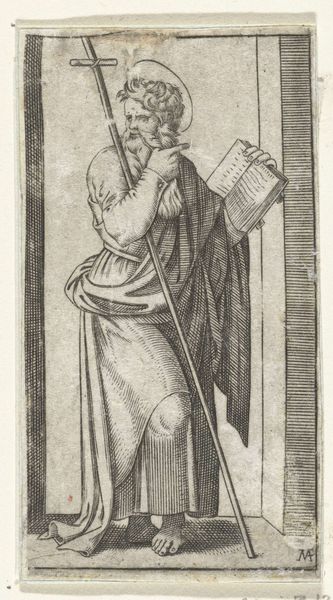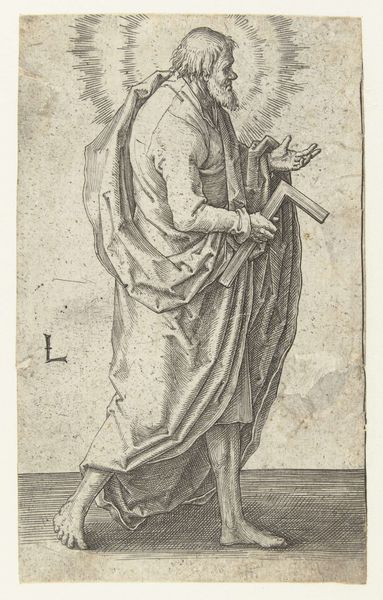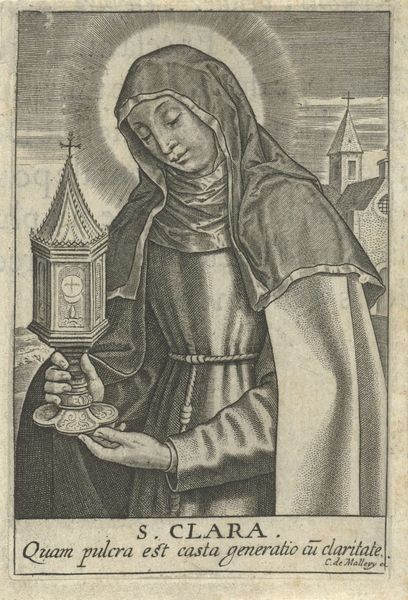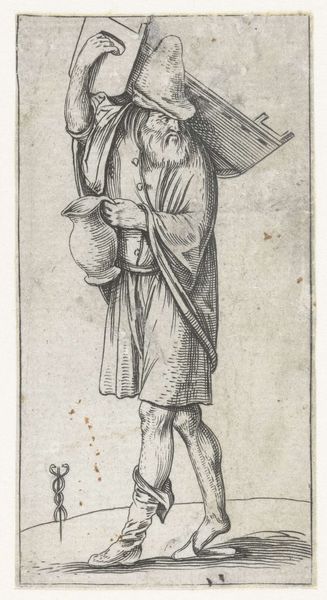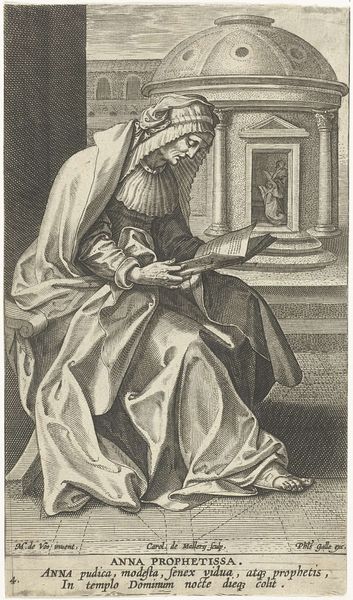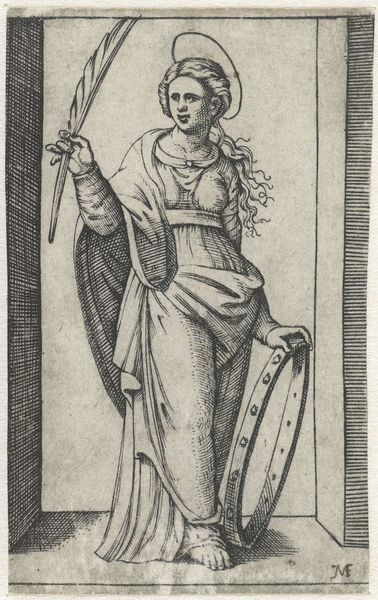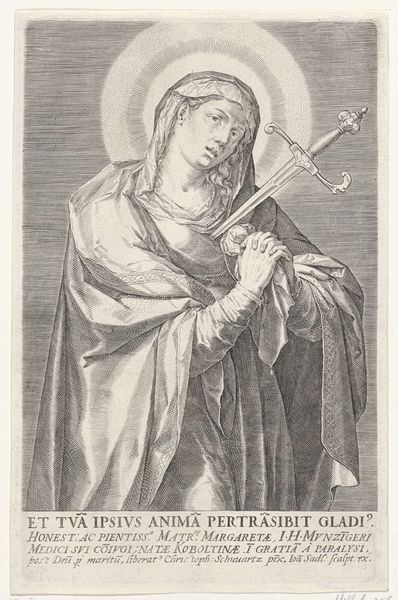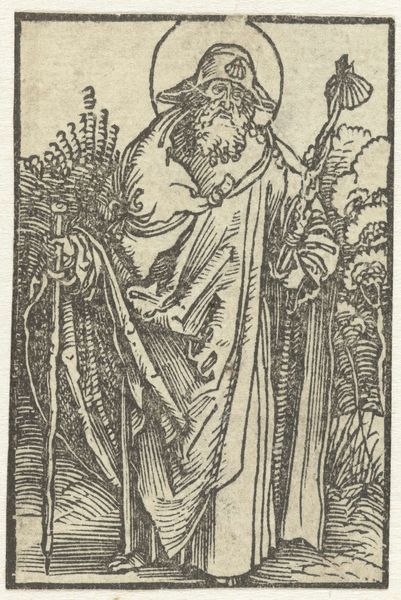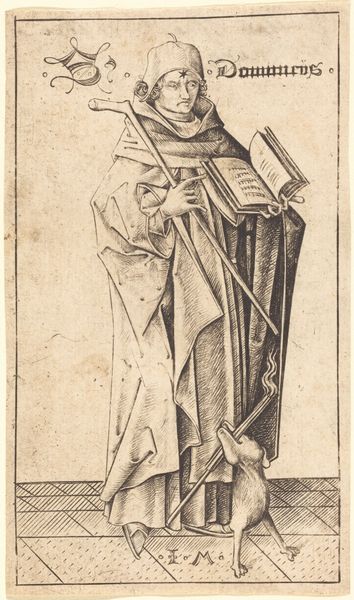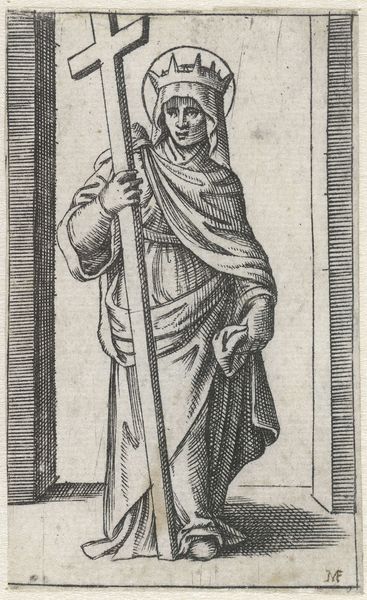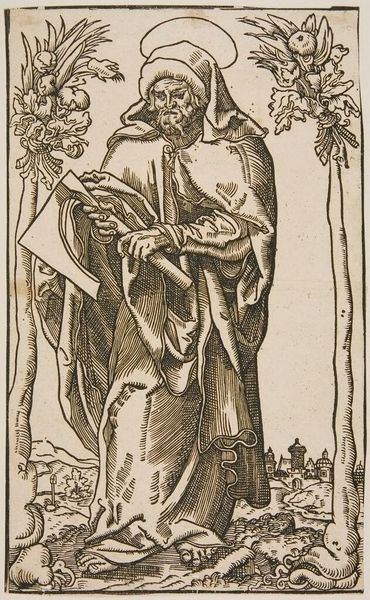
print, engraving
#
portrait
#
baroque
# print
#
old engraving style
#
personal sketchbook
#
portrait drawing
#
history-painting
#
engraving
Dimensions: height 78 mm, width 58 mm
Copyright: Rijks Museum: Open Domain
Editor: We're now looking at "St Catharina van Siena," an engraving by Hendrick van Schoel, created sometime between 1595 and 1622. There's a serene sadness to it. How do you interpret this work from a formalist perspective? Curator: Notice first the artist's commitment to line. The image is built up entirely through carefully placed marks. The density and directionality of these lines modulate to create a sense of light, shadow, and form. Consider how the parallel hatching gives shape to the drapery and also how it describes the planes of her face, creating an illusion of depth within a two-dimensional medium. What stands out to you about the composition itself? Editor: Well, the subject's inward gaze and the diagonal of the crucifix create a sense of intimacy, almost like a private moment we're witnessing. Curator: Precisely. The closed eyes remove her from direct engagement with the viewer, reinforcing this feeling. Moreover, observe the circular composition around the head – the halo formed through radiating lines juxtaposes intriguingly with the thorns that surround her face. Editor: I hadn’t noticed how those shapes worked together before. So it is as if the artist wanted to indicate pain and salvation in the same structure? Curator: Indeed. Van Schoel presents these as interwoven parts of the same reality through visual means. Are you seeing anything that may suggest meaning on a symbolic level? Editor: Perhaps the open book and the rosary? Curator: Indeed. These invite us to reflect on devotion and the importance of a personal commitment, but more importantly they do that by establishing relationships, geometrical relations and optical ones. In its formal organisation, the composition alludes to transcendental experiences that it, nevertheless, does not depict. Editor: So it's the lines, shapes, and arrangement that construct that mood, more than the historical or religious context? That's a fresh way of seeing it. Thank you. Curator: Absolutely, by engaging with its structure, one begins to decode its deeper resonance and formal strength.
Comments
No comments
Be the first to comment and join the conversation on the ultimate creative platform.
